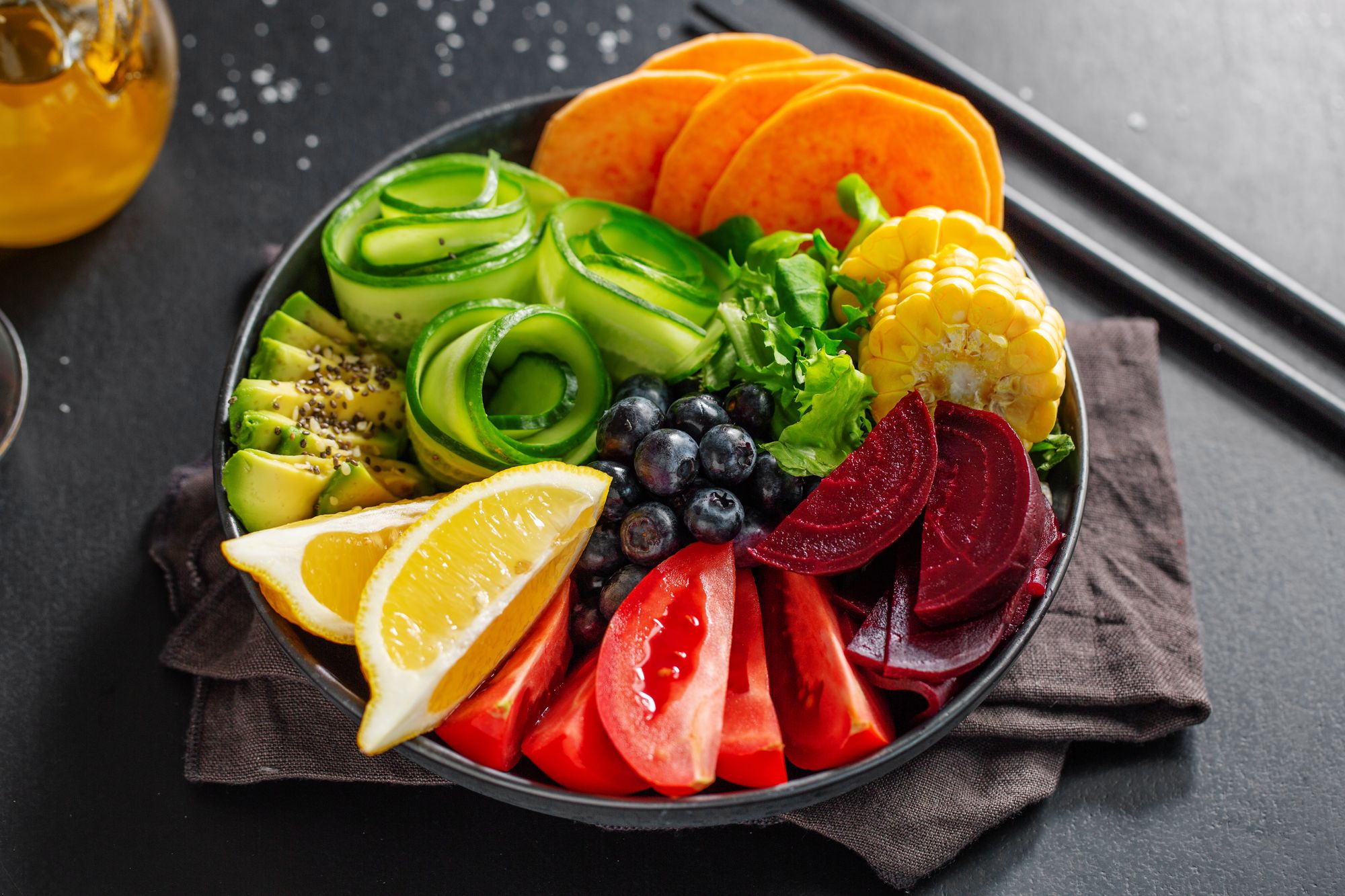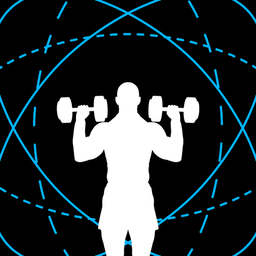How to Gain Muscle and Lose Fat Like a Minimalist in the Gym
Want to spend less time in the gym, but still want to achieve your physique goals? Mm. Here's how to gain muscle and lose fat like a minimalist.

You want to build muscle and lose fat.
But you’re not a big fan of sinking endless hours — time you could have spent exploring the world, with loved ones, or on your other hobbies — in the gym.
Well, guess what? It’s not an either-or kind of thing.
Taking a page from minimalists' playbook, here's how to gain muscle and lose fat while doing as little as possible. As little as possible: remember that that'll be our mantra for the rest of this article.
#1: Train 2x weekly
Just twice weekly?
Yes. Research — we’re talking multiple studies and a meta-analysis — shows that regardless of weekly training frequency, your rate of muscle growth wouldn’t change if you train that muscle group:
- At least 2x weekly
- With enough training volume
- With adequate effort and intensity (i.e., go reasonably close to failure)
So. With that said, why would you want to spend an additional day (or additional days) in the gym when you don’t have to?
#2: Be very clear on the areas you’d like to prioritize
Of course, training like a minimalist isn't always rainbows and butterflies.
Only training 2x weekly necessitates trade-offs.
Unless you'd like to spend 3+ hours in the gym per session, it's 99.99% impossible to hit and build muscle mass in every muscle group optimally. And that's why you need to prioritize.
Now, do me a favor.
Get completely naked and stand in front of the mirror. What would you like to work on?
Don’t say, “Everything” or “Almost everything”. Force yourself to assign a number to all your muscle groups — feel free to do so after you put your clothes back on … or not; it’s up to you 🤪 — 1 for the highest priority and 10 for the lowest.
Here’s a list of muscle groups you could use for your convenience:
- Shoulders
- Biceps
- Triceps
- Chest
- Back
- Abs
- Quads
- Glutes
- Hamstrings
- Calves
#3: Build your workout routine
Have you got your numbered list handy? (If you don't, please go back and do it. Right now!)
Group those muscle groups according to the following criteria:
- 1 to 4: High priority
- 5 to 7: Mid priority
- 8 to 10: Low priority
Here’s an example of how I’d group my muscle groups:
- High priority: Quads, glutes, hamstrings, shoulders
- Mid priority: Back, chest, abs
- Low priority: Biceps, triceps, calves
Choose your exercises
Then, based on those muscle groups, I want you to think of 6 exercises, max (remember: minimalism!), per session that’ll target your high-priority muscle groups.
Helpful tip?
Choose exercises that can also sufficiently involve your mid-priority group muscles at the same time (but don’t sweat if you can’t — because I’ll share a hack at the end of this article; so ✨ watch out for that ✨).
For inspiration, here are the 6 exercises I’d pick to build muscle mass in my high-priority and mid-priority muscle groups.
Workout 1
#1: Romanian deadlift (Glutes, hamstrings)
#2: Barbell bench press (Chest, shoulders, triceps)
#3: Leg press (Quads, glutes)
#4: Back extensions (Glutes)
#5: Lat pulldown (Back, biceps)
#6: Dumbbell lateral raise (Shoulders)1: Romanian deadlift (Glutes, hamstrings)
Workout 2
#1: Barbell hip thrust (Glutes)
#2: Seated cable rows (Back, biceps)
#3: Machine overhead press (Shoulders)
#4: Leg extension (Quads)
#5: Seated leg curl (Hamstrings)
#6: Dumbbell lateral raise (Shoulders)
Note: you don’t necessarily have to build 2 different workouts if you don’t want to.
But just know that doing so could help you see more well-balanced muscle growth. Without boring you with too much detail, notice the pairings of the following exercises for the following:
- Quads: Leg press and leg extension; the former targets the 3 vastus muscles, while the latter targets the rectus femoris.
- Hamstrings: Romanian deadlift and seated leg curl; the former targets the uni-articular hamstring muscle, while the latter targets the bi-articular hamstring muscles.
An additional tip for your workout routine
Want to spend as little time as possible in the gym per training session? Then consider structuring your workouts as supersets, where you do 2 exercises back-to-back without rest.
Just note that you should always strive for agonist-antagonist pairs where possible.
Avoid agonist muscle pairs — that work the same muscle back-to-back — at all times.
So, as an example, here’s how I’d incorporate supersets into my Workout 2:
#1: Barbell hip thrust (Glutes)
#2A: Seated cable rows (Back, biceps)
#2B: Machine overhead press (Shoulders)
#3A: Leg extension (Quads)
#3B: Seated leg curl (Hamstrings)
#4: Dumbbell lateral raise (Shoulders)
Learn more about supersets here:

#4: Explore other forms of strength training and cardio
Wait.
Wouldn’t neglecting your other low priority muscle groups cause all sorts of problems, like increased injury risks? Well, NGL, there is a degree of risk involved, but it’s usually mitigated by:
- Focusing on compound movements: These will work all muscle groups to some degree.
- Engaging in other forms of physical activities: You don't want to spend too much time in the gym. But what about other forms of strength training, like rock climbing, Pilates, yoga, dancing, ice skating, kickboxing, etc.? All these will engage your low priority muscle groups to some degree. And, besides, they're also massively useful for fat loss purposes (higher TDEE = higher chances of you sticking to your calorie deficit!)
#5: Tweak your diet
Ah, of course … we cannot talk about how to gain muscle and lose fat like a minimalist without further covering the fat loss portion.
Yes, a large part of weight loss is increasing your physical activity — through the gym or other exercise forms — but the other indispensable portion is also controlling your calorie intake.
That said, to keep in line with the article’s minimalism theme, I’d advise you to eschew the hard work of calorie-counting and, instead, work on improving the quality of your diet by:
- Building your diet around minimally processed, whole-foods
- Eating lots of fruits and vegetables
- Hitting your daily protein intake requirements (it’s beneficial for muscle gain and fat loss)
Psst: need meal plan ideas? We’ve got you covered.


Alright, congratulations! You now know how to gain muscle and lose fat like a minimalist in the gym.
Or do you?
Because let's be honest, building a workout routine that works for you sounds deceivingly straightforward until you try it yourself — and realize that trying to get everything to align with your goals is a f*cking nightmare.
So, if you’d like someone else to take care of everything for you (from your workout to nutrition planning), check out GymStreak. This AI-powered personal trainer and nutrition app is what dreams of what of.
Here’s a preview:
Workout Programming + Nutrition Tracking, Off Your Hands
*sigh of relief* We'll guide you through it all — step-by-step. Just download the app, and you'll be making progress toward your dream body like never before.
References
Colquhoun, Ryan J., et al. “Training Volume, Not Frequency, Indicative of Maximal Strength Adaptations to Resistance Training.” Journal of Strength and Conditioning Research, vol. 32, no. 5, May 2018, pp. 1207–13. PubMed, https://doi.org/10.1519/JSC.0000000000002414.
Ema, Ryoichi, et al. “Unique Activation of the Quadriceps Femoris during Single- and Multi-Joint Exercises.” European Journal of Applied Physiology, vol. 116, no. 5, May 2016, pp. 1031–41. PubMed, https://doi.org/10.1007/s00421-016-3363-5.
Kellis, Eleftherios, and Anthony J. Blazevich. “Hamstrings Force-Length Relationships and Their Implications for Angle-Specific Joint Torques: A Narrative Review.” BMC Sports Science, Medicine and Rehabilitation, vol. 14, no. 1, Sept. 2022, p. 166. BioMed Central, https://doi.org/10.1186/s13102-022-00555-6.
Schoenfeld, Brad J., et al. “Effects of Resistance Training Frequency on Measures of Muscle Hypertrophy: A Systematic Review and Meta-Analysis.” Sports Medicine (Auckland, N.Z.), vol. 46, no. 11, Nov. 2016, pp. 1689–97. PubMed, https://doi.org/10.1007/s40279-016-0543-8.


